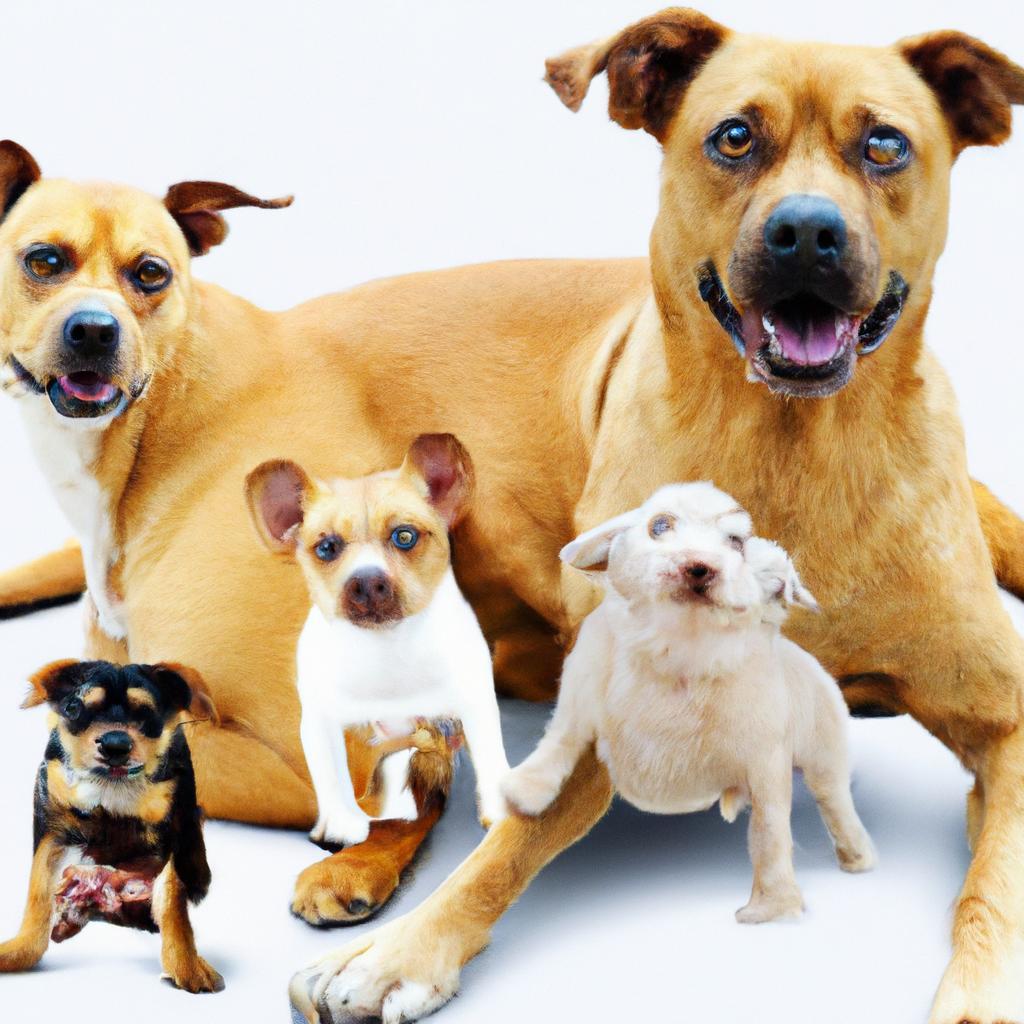When the Johnsons welcomed a Golden Retriever named Max into their home, they had no idea how much joy he would bring. One day, while playing in the yard, their toddler stumbled and fell. Max rushed over, gently nudging the child with his nose, ensuring he was okay. This heartwarming moment exemplified why Golden Retrievers are often hailed as the safest family dogs. With their gentle temperament, loyalty, and protective instincts, they not only make perfect companions but also provide peace of mind for families. Choose wisely; choose safety.
Contents
- Understanding the Characteristics of a Safe Family Dog
- Evaluating Temperament and Behavior in Family-Friendly Breeds
- Top Breeds Recommended for Families Seeking Safety
- Creating a Secure Environment for Your Family Dog
- Q&A
Understanding the Characteristics of a Safe Family Dog
When considering a family dog, it’s essential to focus on specific characteristics that contribute to a safe and harmonious household. A dog that exhibits a calm demeanor is often more adaptable to the bustling environment of a family. These dogs are less likely to react aggressively to loud noises or sudden movements, making them ideal companions for children who may be unpredictable in their play. Look for breeds known for their gentle nature, as they tend to be more patient and tolerant.
Another critical trait of a safe family dog is **sociability**. A dog that enjoys the company of people and other pets will thrive in a family setting. This characteristic not only fosters positive interactions but also helps in building a strong bond between the dog and family members. Dogs that are naturally friendly and eager to please are more likely to engage positively with children, making playtime enjoyable and safe for everyone involved.
**Trainability** is also a vital factor when selecting a family dog. A dog that is eager to learn and responds well to commands can significantly enhance safety within the home. Basic obedience training can prevent potential accidents and ensure that the dog behaves appropriately in various situations. Breeds that are known for their intelligence and willingness to train, such as Labrador Retrievers and Golden Retrievers, often excel in family environments, providing both companionship and security.
Lastly, consider the **energy level** of the dog. A family dog should have a balanced energy level that matches the family’s lifestyle. High-energy breeds may require more exercise and stimulation, which can be challenging for families with young children or busy schedules. Conversely, a dog with a more moderate energy level can adapt well to family routines, ensuring that everyone, including the dog, remains happy and healthy. Choosing a breed that aligns with your family’s activity level is crucial for fostering a safe and enjoyable environment.
Evaluating Temperament and Behavior in Family-Friendly Breeds
When considering a family-friendly dog, evaluating temperament and behavior is crucial. Certain breeds are renowned for their gentle nature and adaptability, making them ideal companions for children. **Golden Retrievers**, for instance, are celebrated for their friendly disposition and eagerness to please. Their patience and playful demeanor allow them to thrive in family environments, often forming strong bonds with kids.
Another breed worth considering is the **Labrador Retriever**. Known for their intelligence and loyalty, Labs are not only affectionate but also highly trainable. Their sociable nature means they typically get along well with other pets and children alike. This breed’s playful energy can keep up with active families, ensuring that playtime is both fun and safe.
Lastly, the **Cavalier King Charles Spaniel** stands out for its affectionate and gentle demeanor. This breed is known for its adaptability and love for human companionship. Cavaliers thrive on interaction and are often content to cuddle with family members after a day of play. Their calm nature and friendly disposition make them an excellent choice for families looking for a loving and safe pet.
Top Breeds Recommended for Families Seeking Safety
When it comes to choosing a dog for your family, safety is often a top priority. Certain breeds are renowned for their gentle nature, patience, and protective instincts, making them ideal companions for households with children. Here are some breeds that consistently rank high in terms of family safety:
- Labrador Retriever: Known for their friendly demeanor and intelligence, Labradors are excellent family dogs. They are patient with children and can be easily trained, making them a safe choice for families.
- Golden Retriever: With their loving and loyal nature, Golden Retrievers are another breed that excels in family environments. They are gentle, playful, and protective, ensuring a safe atmosphere for kids.
- Beagle: Beagles are friendly and curious, making them great companions for children. Their playful spirit and gentle disposition allow them to interact safely with kids while providing endless fun.
- Boxer: Boxers are known for their boundless energy and affectionate nature. They are protective of their families and are known to be great with children, making them a safe and loving choice.
In addition to their temperament, these breeds often exhibit traits that enhance their suitability for family life. For instance, they tend to be social and enjoy being part of family activities, which fosters a strong bond between the dog and children. Their natural instincts to protect and care for their family members further contribute to a safe environment.
- Newfoundland: This giant breed is often referred to as “gentle giants.” Newfoundlands are known for their calm demeanor and protective nature, making them incredibly safe around children.
- Cavalier King Charles Spaniel: These small dogs are affectionate and friendly, making them perfect companions for families. Their gentle nature ensures that they interact safely with children.
- Collie: Collies are known for their intelligence and loyalty. They are protective of their families and have a natural instinct to look after children, making them a safe choice for families.
Ultimately, the key to ensuring a safe environment for your family lies not only in selecting the right breed but also in proper training and socialization. Regardless of the breed, teaching your dog basic commands and socializing them with children will enhance their ability to interact safely. By investing time in training and understanding your dog’s behavior, you can create a harmonious and secure home for both your family and your furry friend.
Creating a Secure Environment for Your Family Dog
Creating a safe haven for your family dog is essential for their well-being and happiness. A secure environment not only protects your furry friend from potential dangers but also fosters a sense of comfort and stability. To achieve this, consider implementing various strategies that cater to both the physical and emotional needs of your pet.
First and foremost, ensure that your home is free from hazards. This includes:
- Securing electrical cords and outlets to prevent chewing.
- Storing toxic substances, such as cleaning supplies and medications, out of reach.
- Using baby gates to restrict access to staircases or rooms that may pose risks.
Additionally, creating a designated space for your dog can significantly enhance their sense of security. This area should be comfortable and familiar, equipped with their bed, toys, and water. By establishing a safe zone, you provide your dog with a retreat where they can relax and feel protected from the hustle and bustle of family life.
Socialization is another crucial aspect of a secure environment. Regularly exposing your dog to different people, pets, and situations can help them build confidence and reduce anxiety. Consider the following tips for effective socialization:
- Organize playdates with other friendly dogs.
- Take your dog on walks in various neighborhoods.
- Enroll in obedience classes to enhance their skills and social interactions.
maintaining a consistent routine can greatly contribute to your dog’s sense of security. Dogs thrive on predictability, so establishing regular feeding, walking, and playtime schedules will help them feel more at ease. By prioritizing these elements, you create a nurturing environment that not only safeguards your dog but also strengthens the bond between your family and your beloved pet.
Q&A
-
What breeds are considered the safest family dogs?
Some of the safest family dog breeds include:
- Golden Retriever – Known for their friendly and tolerant attitude.
- Labrador Retriever – Highly sociable and gentle with children.
- Beagle – Friendly and curious, making them great companions.
- Bichon Frise – Affectionate and playful, ideal for families.
-
How can I ensure my dog is safe around children?
To ensure your dog is safe around children, consider the following:
- Choose a breed known for its gentle temperament.
- Socialize your dog from a young age to interact well with kids.
- Supervise all interactions between your dog and children.
- Teach children how to approach and interact with dogs safely.
-
What training should I provide for a family dog?
Essential training for a family dog includes:
- Basic obedience commands (sit, stay, come).
- House training to prevent accidents.
- Socialization with other pets and people.
- Positive reinforcement techniques to encourage good behavior.
-
Are there any specific health considerations for family dogs?
Yes, consider the following health aspects:
- Regular veterinary check-ups to monitor health.
- Proper diet and exercise to maintain a healthy weight.
- Awareness of breed-specific health issues.
- Vaccinations to protect against common diseases.
choosing the right family dog is crucial for ensuring a safe and harmonious home. By considering breeds known for their gentle temperament and protective instincts, you can find a loyal companion that enriches your family’s life while providing peace of mind.

大家好,我是彼得潘,專業的手法身體治療師。我喜歡探索和研究各種主題,並透過與人工智慧的合作分享專業、實用、有趣的文章。我們定期進行人工審核,以確保內容的準確性。如果您發現文章中有任何不準確的地方,請隨時與我們聯繫,我們會及時糾正。您可以透過 [email protected] 與我們聯繫。



